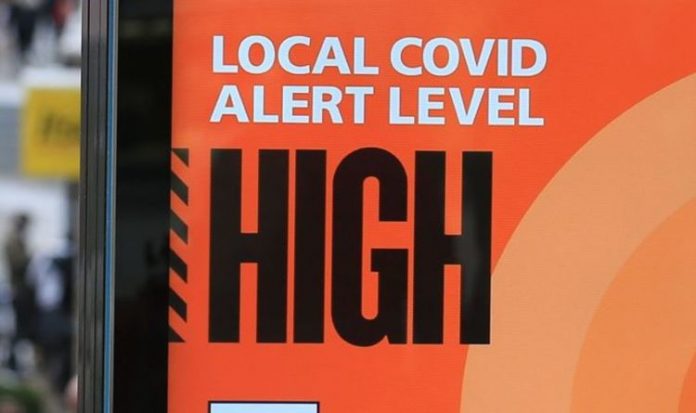Tier 2 and Tier 3 rules will keep several regions in some of the most restrictive coronavirus measures this side of Christmas. Announcing the state of play in Parliament on Wednesday, health secretary Matt Hancock said some areas saw an increase in cases, while others saw a reduction. Most have now either moved up to Tier 3 or down to Tier 2, with one area moving to Tier 1.
What is the difference between Tier 2 and Tier 3?
Tiers 2 and 3 both serve the same purpose; to limit social contact, the former in “high alert” and the latter in “very high alert”.
To do so, they prevent significant gatherings at home, outdoors and in public locations.
Less social mobility should prevent the virus from spreading between people, hence why some high-risk areas need more hefty restrictions.
READ MORE: Tier 4 warning: No10 plots toughest COVID-19 restrictions yet
But under Tier 3, all hospitality venues must close to the public, whether Covid-safe or not.
They can continue business remotely if possible, via takeaway, click-and-collect or drive-thru.
Hotels, B&B’s, guest houses, and campsites must also close as well unless exempt.
Exempt venues include those which people use as a primary residence, or where they are necessary for work, education or training.







